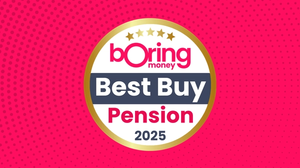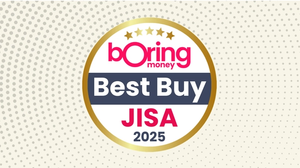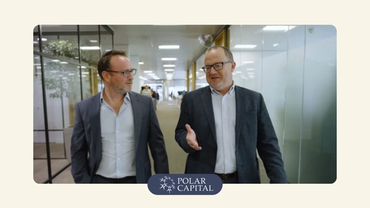Moneybox, HSBC and Vanguard take the robo crown
19 April, 2022
By James Hetherington
Moneybox, HSBC and Vanguard have, once again, taken the top spot in Boring Money's latest data for ready-made/robo portfolios. To see the full list of data as one table, click here, or for some analysis and a breakdown of the different risk categories, stay put!
During the 27-month period starting in January 2020 and ending in March 2022, the best-performing ready-made portfolio - Moneybox's Adventurous Fund - delivered 27.0% growth after charges. This is despite two big market shocks: The first during the onset of the pandemic in the spring of 2020, and the second in response to the Russian invasion of Ukraine in February 2022.
What are ready-made portfolios?
Before we dive into the detail, if you're not familiar with the term 'robo' (or 'ready-made'), here's what you need to know: A ready-made portfolio picks your investments for you, based on your risk preferences.
If the thought of picking your own shares or funds for your ISAs and pensions terrifies you, the good news is that you don't have to! With a ready-made portfolio, you can put your money in a sensible suite of investments known as a diversified portfolio. This will have been carefully selected by experts who know what they’re doing. You can learn more in our ready-made portfolio guide.
And now for the data!
Ready-made portfolios performance (Jan 2020 – Mar 2022)
Key takeaways:
Interestingly, the best-performing portfolio in the medium-risk category did better than six out of ten portfolios in the high-risk category.
One portfolio in the low-risk category delivered negative net returns.
The difference between the best and worst-performing portfolio was 27.82%.
If you had put £1,000 in the best-performing portfolio, you would have made a net gain of £278.20, compared to a net loss of £7.20 for the worst-performing portfolio.
High-risk ready-made portfolios
These portfolios generated average (mean) net returns of 18.04% between January 2020 and March 2022. The best performer was Moneybox's Adventurous Fund, with net returns of 27.0% for this period.
How do I know what a high-risk portfolio is?
This type of portfolio will often be described by providers as 'adventurous' or 'aggressive', scored by its share allocation (e.g. 8/10), or simply labelled as 'high risk'.
Normally, at least 75% of your investments will be in shares, although some high-risk portfolios have 100% share allocation.
These portfolios are typically the most volatile, so you may see some big swings and roundabouts.
Medium risk ready-made portfolios
These portfolios generated average (mean) net returns of 10.86% between January 2020 and March 2022. The best performer was Moneybox's Balanced Fund, with net returns of 20.55% for this period.
How do I know what a medium-risk portfolio is?
You'll often hear providers describe this type of portfolio with words such as 'balanced' or 'medium', score it by its share allocation (e.g. 5/10), or simply label it as ‘medium risk’.
About 40% to 75% is typically in shares, so there can be quite a lot of variation compared to the other categories.
These portfolios can still be volatile, although usually not to the same extent as the high-risk alternatives.
Low-risk ready-made portfolios
These portfolios generated average (mean) net returns of 1.90% between January 2020 and March 2022. The best performer was AJ Bell's Cautious Fund, with net returns of 4.77% for this period.
How do I know what a low-risk portfolio is?
Investment providers will often describe this type of portfolio with words like 'cautious' or 'defensive', score it by its share allocation (e.g. 2/10), or simply label it as 'low risk'.
As a general rule, if more than 70% of a portfolio consists of cash and bonds, then it is usually considered 'low risk'.
You will usually be exposed to less shares and therefore less volatility.
How to choose a ready-made portfolio
When it comes to risk levels, many people often pick the middle option (like going for the third cheapest wine in a restaurant!) because they think it's the safest bet. However, that's not always the right choice.
For more guidance, read this article on how to pick a ready-made portfolio, or check out this summary below:
1. Choose your timeframe and risk level
For short-term investing, you may find that it's safer to keep your money in a low-risk portfolio. But if you're happy to keep it hidden away for a longer period of time, you may get better returns by investing it in a high-risk portfolio with greater exposure to the stock market.
2. Choose your risk preference
Timeframes aside, you also need to select a risk profile that you’re comfortable with. For instance, if stock markets plummet by 20% in one day, will you have a meltdown and sell up in a panic? If so, you may want to stick to a low-risk fund that invests mainly in cash and bonds. If not, you could consider a medium or high-risk fund that invests mainly in shares.
3. Still a bit unsure?
Find out more about in our ready-made portfolio guide.
How do I know which risk category is right for my financial goals?
High or medium-risk portfolios may be a better option for the following:
Saving for your pension
If you're not expecting to retire for at least 10, 20, or even 30 years, you may get better returns from a high-risk portfolio. As you approach retirement age, you may decide to switch your investments to a low-risk portfolio. A financial adviser is best placed to assist you here. Use our Adviser Directory to find one suited to your unique needs!
Saving for your children when they are still very young
If your child is only 2 years old, you can keep putting money into their Junior ISA until they're 18. 16 years is a long time to ride the waves of the stock markets, so you can usually afford to take on a little more risk. If your child is older - say, 11 or 12 - you may feel more comfortable with a low-risk portfolio as you have less time to regain any losses before the little one gets access to the cash.
Low-risk portfolios may be a better option for the following:
Saving for a mortgage within 3-5 years
For example, if you’re under 40 and have a Lifetime ISA (LISA), keeping your money in a low-risk portfolio may be a safer bet if you plan to use all or most of your investments to fund a mortgage deposit in the next few years. If you plan to continue topping up your LISA until you’re 50 in order to fund your retirement, you might want to consider switching to a medium or high-risk portfolio instead, as you have much more time to offset any losses on the stock market.
Saving for your pension if you plan to retire within 3-5 years
Likewise, if you plan to draw an income from your pension savings within 3-5 years, you might be more comfortable with a low-risk portfolio as it will be less exposed to any short-term market volatility.
What are the benefits of using a ready-made portfolio when markets are volatile?
You may have noticed that the past couple of years have seen some very volatile market movements! So why might you be better off choosing a robo/ready-made portfolio instead of picking your investments yourself?
Most ready-made portfolios do what is known in financial circles as 'modern portfolio theory', which means monitoring and adjusting your portfolios to reflect the long-run relationships between different investments.
This also helps fund managers to maximise the overall returns for any given risk category, or minimise short-term losses when markets take a bad turn.
A ready-made portfolio eliminates the need for you to 'rebalance' your investments yourself and allows you to benefit from portfolio diversification in the long-run.
Ready-made portfolios performance in 2022 so far - A summary
Every ready-made portfolio in our data generated negative net returns in January and February 2022.
However, by March, many portfolios were already recovering and generating returns.
Moneybox's Adventurous Fund reported net growth of 7% in March, the highest of all these ready-made portfolios for this month.
Remember that month-to-month performance can vary, especially for medium and high-risk portfolios!








